NASA delays launch of Artemis I rocket until Sept. 27
Wednesday, 14 September 2022 10:38 The highly anticipated launch of NASA's Artemis I moon rocket has been delayed once again, with the agency now targeting Sept. 27 as a date for liftoff.
NASA said Monday that the new date would give it more time to prepare for the cryogenic demonstration test and the launch. The new backup date is Oct. 2.
"This week, teams will conduct tests at ambient conditions to ensure there
The highly anticipated launch of NASA's Artemis I moon rocket has been delayed once again, with the agency now targeting Sept. 27 as a date for liftoff.
NASA said Monday that the new date would give it more time to prepare for the cryogenic demonstration test and the launch. The new backup date is Oct. 2.
"This week, teams will conduct tests at ambient conditions to ensure there Study looks at how water got on the moon
Wednesday, 14 September 2022 10:38 At least since the first manned missions to the moon in the 1960s and early '70s, the general belief was that Earth's orbiting partner was bone dry. Then, about two years ago, several lunar missions showed that's not absolutely true. Some lunar soil contains minute amounts of water molecules.
But where did water on the moon come from? Answering that question can help us understand the moon
At least since the first manned missions to the moon in the 1960s and early '70s, the general belief was that Earth's orbiting partner was bone dry. Then, about two years ago, several lunar missions showed that's not absolutely true. Some lunar soil contains minute amounts of water molecules.
But where did water on the moon come from? Answering that question can help us understand the moon ESA astronaut Samantha Cristoforetti becomes first European female ISS commander
Wednesday, 14 September 2022 08:00
ESA astronaut Samantha Cristoforetti will soon fulfil the role of commander of the International Space Station, taking over from fellow Expedition 67 crew member Oleg Artemyev.
Blue Origin says still “super early” into New Shepard launch failure investigation
Wednesday, 14 September 2022 07:31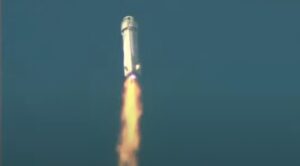
A Blue Origin executive said it’s too soon to conclude what caused the failure of a New Shepard suborbital vehicle on a Sept. 12 flight, playing down any implications for the company’s New Glenn orbital rocket.
Iceye and Satlantis propose optical and radar satellite constellation
Wednesday, 14 September 2022 06:27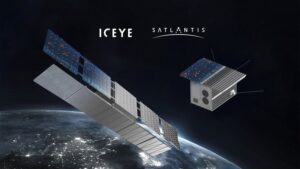
Iceye announced preliminary plans Sept. 14 to work with Satlantis, a Spanish Earth-observation technology company, to launch a constellation of four satellites to acquire high-resolution radar and optical imagery.
The post Iceye and Satlantis propose optical and radar satellite constellation appeared first on SpaceNews.
Investors take long-term view of space industry amid near-term challenges
Wednesday, 14 September 2022 03:19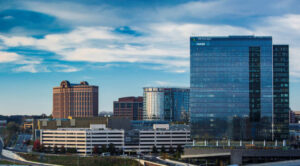
Despite near-term headwinds in the economy and the markets, executives and investors remain bullish about the space industry’s long-term prospects.
The post Investors take long-term view of space industry amid near-term challenges appeared first on SpaceNews.
Wireless communications startup repurposes technology from Google’s balloon internet project
Tuesday, 13 September 2022 20:03
Aalyri Technologies, a startup that emerged from stealth mode Sept. 13, plans to provide high-speed internet using software and networking technology from Google’s ill-fated balloon project.
The post Wireless communications startup repurposes technology from Google’s balloon internet project appeared first on SpaceNews.
Op-ed | Whither Mars or Wither Mars?
Tuesday, 13 September 2022 19:52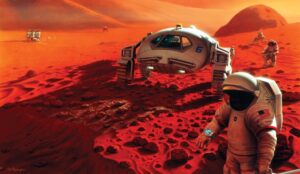
Are we on a good path toward developing and implementing a human mission to explore Mars?
The post Op-ed | Whither Mars or Wither Mars? appeared first on SpaceNews.
Space Force nominee sees growing threats to U.S. satellites from rival powers
Tuesday, 13 September 2022 16:48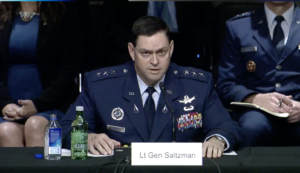
Lt. Gen. B. Chance Saltzman testified at a confirmation hearing Sept. 13 to be the next chief of space operations of the U.S. Space Force
Arianespace and OneWeb reach settlement for suspended launches
Tuesday, 13 September 2022 16:16
Arianespace said Sept. 13 it has reached a settlement deal that could revive a launch services agreement with OneWeb that was suspended following Russia’s invasion of Ukraine.
The post Arianespace and OneWeb reach settlement for suspended launches appeared first on SpaceNews.
Video: Ariane 6 launchpad testing
Tuesday, 13 September 2022 15:11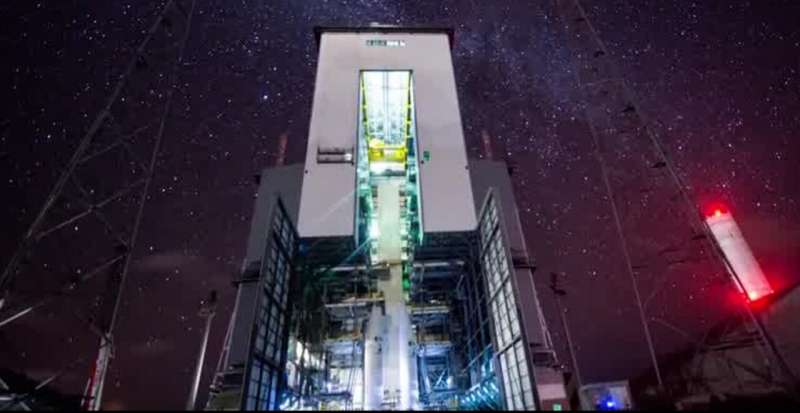
It has been an exciting and busy summer for the European Space Agency, with development and testing of its new Ariane 6 launcher.
At Europe's spaceport in, French Guiana, a test model of the launcher's central core was assembled for the first time.
Ariane 6 is the first Ariane rocket to be assembled horizontally, which is simpler and less costly than more traditional vertical assembly. After assembly, the rocket was moved to its launchpad and placed upright in the massive mobile gantry for combined tests, to validate the compatibility between all components of the complete launch system.
Soon more testing will be done on Ariane 6's upper stage at a purpose-built DLR facility in Lampoldshausen, Germany.
Explore further
China launches Zhongxing-1E military communications satellite
Tuesday, 13 September 2022 14:41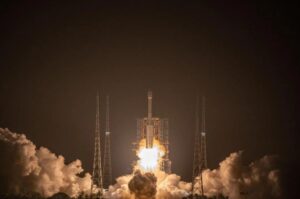
China launched a Long March 7A rocket Tuesday, successfully inserting the Zhongxing-1E satellite into geosynchronous transfer orbit.
Where do high-energy particles that endanger satellites, astronauts and airplanes come from?
Tuesday, 13 September 2022 14:00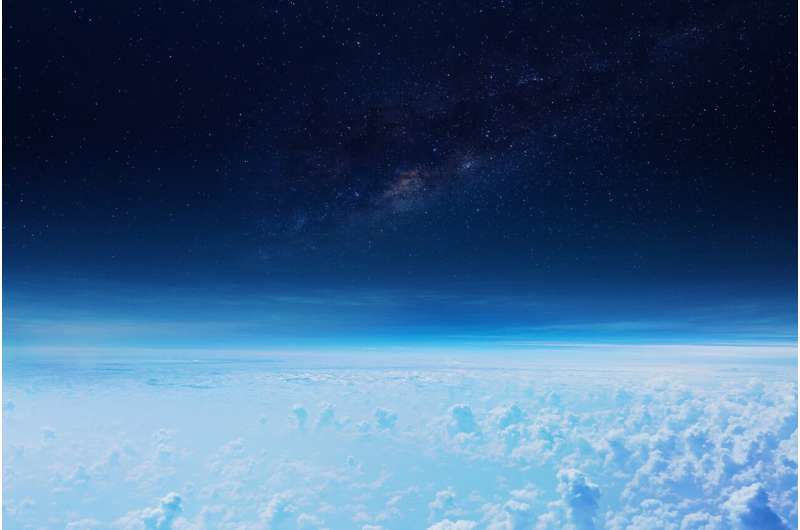
For decades, scientists have been trying to solve a vexing problem regarding the weather in outer space: At unpredictable times, high-energy particles bombard the Earth and objects outside the Earth's atmosphere with radiation that can endanger the lives of astronauts and destroy satellites' electronic equipment. These flare-ups can even trigger showers of radiation strong enough to reach passengers in airplanes flying over the North Pole. Despite scientists' best efforts, a clear pattern of how and when flare-ups will occur has remained enduringly difficult to identify.
This week, in a paper in The Astrophysical Journal Letters, authors Luca Comisso and Lorenzo Sironi of Columbia's Department of Astronomy and the Astrophysics Laboratory, have used supercomputers to simulate when and how high-energy particles are born in turbulent environments like that on the atmosphere of the sun. This new research paves the way for more accurate predictions of when dangerous bursts of these particles will occur.
"This exciting new research will allow us to better predict the origin of solar energetic particles and improve forecasting models of space weather events, a key goal of NASA and other space agencies and governments around the globe," Comisso said.
Harpoons, robots and lasers: How to capture defunct satellites and other space junk and bring it back to Earth
Tuesday, 13 September 2022 13:54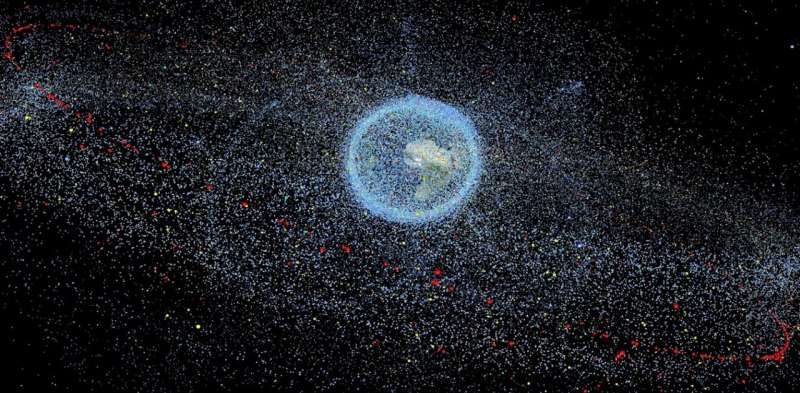
More than half of the thousands of satellites in orbit are now defunct, and this accumulation of floating space debris has been described as a "fatal problem" for current and future space missions and human space travel.
An estimated 130 million objects smaller than 1cm and 34,000 larger than 10cm are traveling in orbit at speeds of thousands of kilometers per hour, according to the European Space Agency (ESA). A report presented at this year's European conference on space debris suggests the amount of space junk could increase fifty-fold by 2100.
While many fragments of space junk are small, they travel so fast their impact has enough energy to disable a satellite or cause significant damage to space stations.
Both the Hubble Telescope and the Solar Maximum Mission (SMM) satellites had coin-sized holes punched into them by flying debris and a mirror on Nasa's James Webb space telescope was damaged by micrometeoroids.
Most satellites were not designed with the end of their usefulness in mind.
Competition is growing in the space-data-relay sector
Tuesday, 13 September 2022 11:25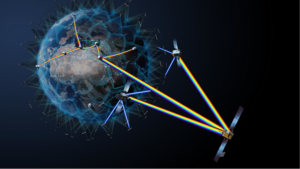
Companies reveal plans for optical and RF data relay networks to address growing demand from satellite operators for high-speed data transfer.
The post Competition is growing in the space-data-relay sector appeared first on SpaceNews.

